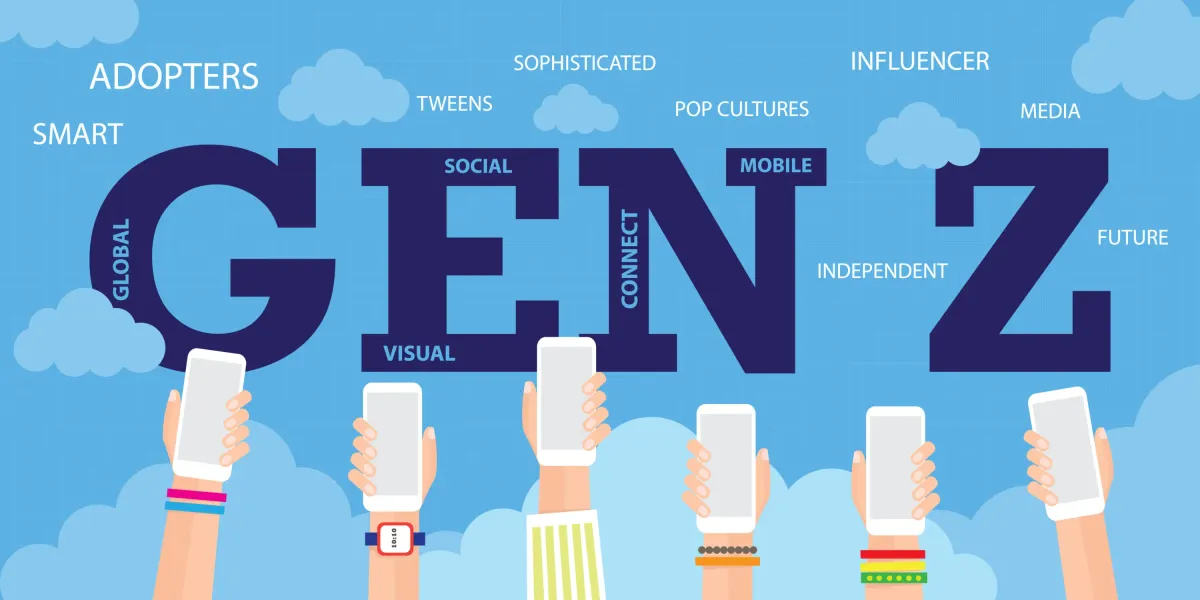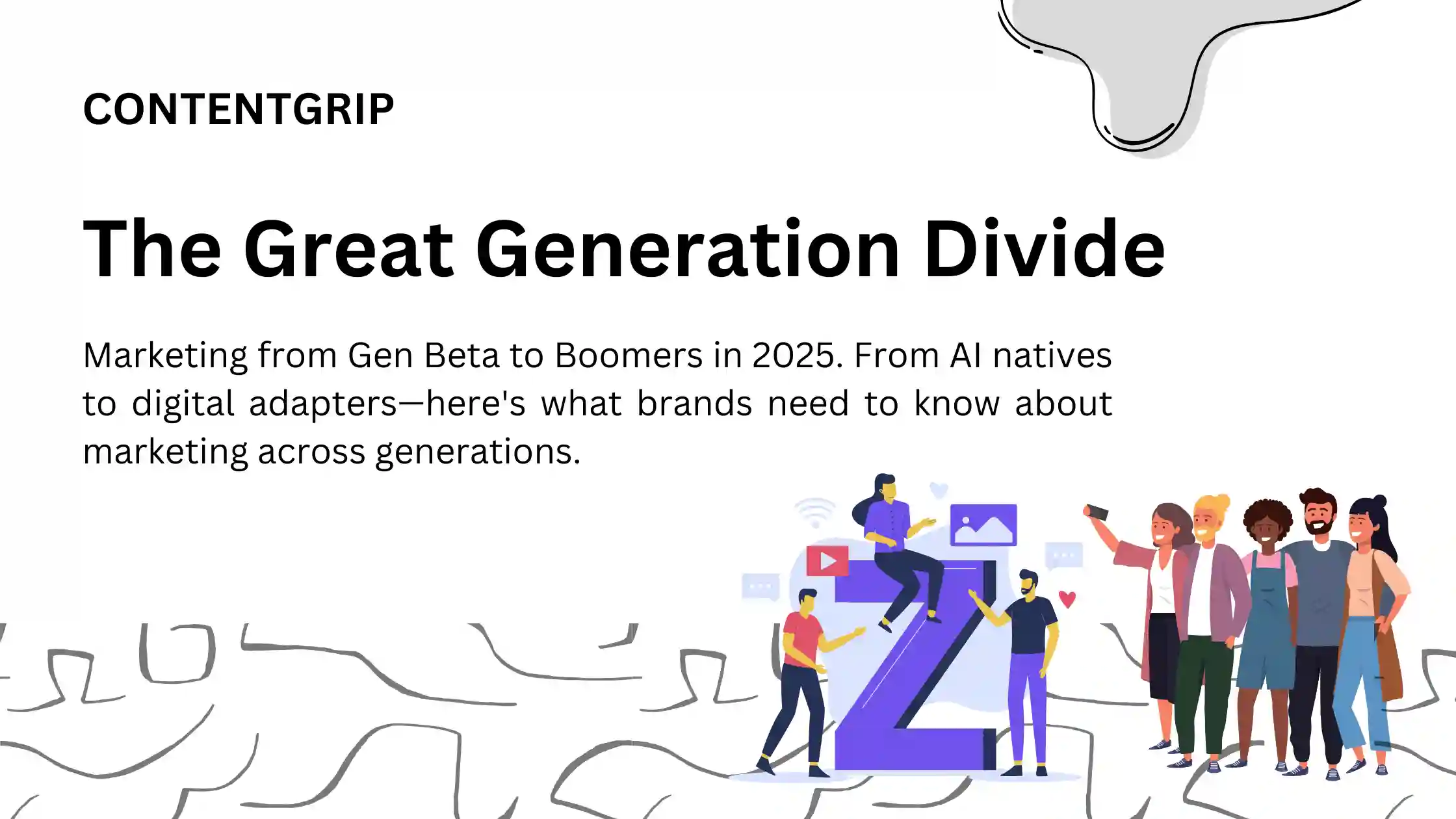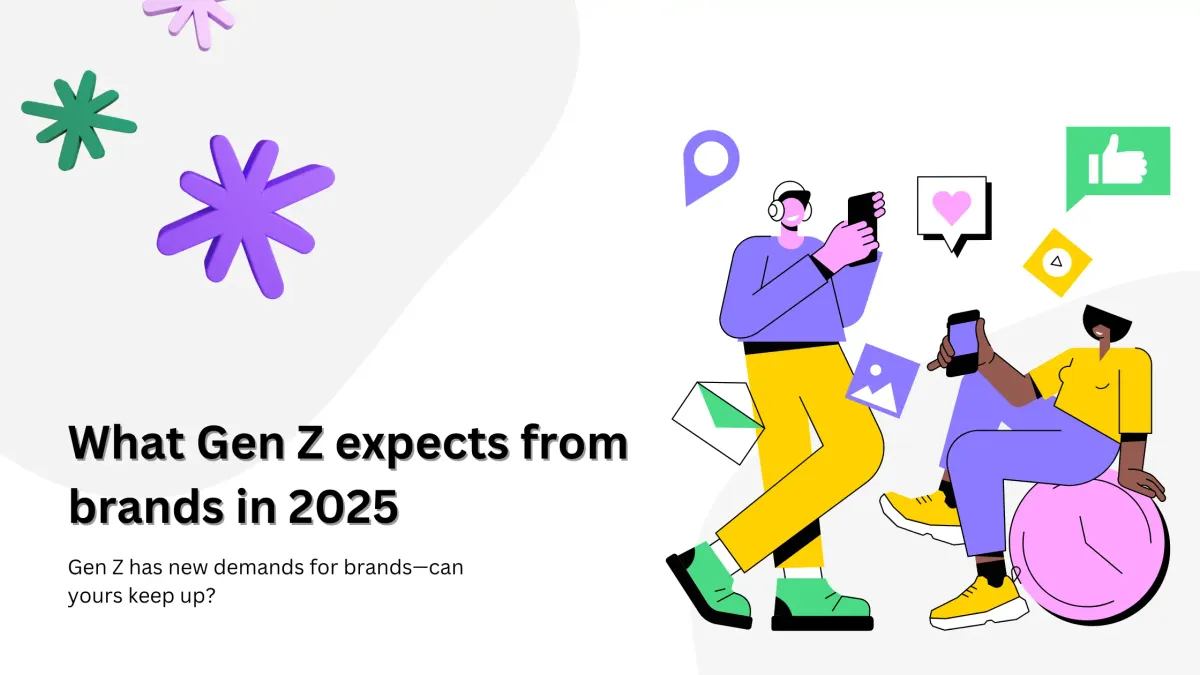Gaming marketing: a complete guide to reaching players across generations 2025
From Gen Alpha to Gen X, discover how top brands are leveraging games for marketing success.

Remember when gaming meant being glued to a TV screen or desktop computer? Those days are long gone. Now, millions of people carry entire gaming universes in their pockets, ready to play anytime, anywhere. Be it on public transport or in a cafe, we will see people young and old playing games on their phone or tablets.
After diving deep into recent gaming statistics and brand collaborations, I've uncovered why marketers can't afford to ignore this platform anymore.
Skeptical? Let’s look at the data.
According to CivicScience's April 2024 study, 65% of U.S. adults are mobile gamers, with 45% playing at least weekly. U.S. teenagers are even more engaged—those aged 15 to 19 spent an average of 113 minutes per day playing games.
What's even more interesting? These games aren't just entertainment—they're becoming powerful stress relievers for many players.
But here's what really caught my attention: 55% of gamers are more likely to buy from brands they see in games. When you pair this with Lumen Research's 2023 finding that in-game ads outperform 76% of other digital formats in capturing attention, you start to see why major brands are jumping in.
Convinced by the numbers yet?
Let me walk you through the top games for each generation and show you how brands are already making waves in these digital playgrounds. I'll also share different marketing approaches that are proving successful in these gaming spaces, including the use of a gamification marketing platform to boost engagement and brand loyalty.
Short on time?
Here is a table of content to quickly find what you are looking for:
- Generation Alpha top 3 games:
- Generation Z top 3 games:
- Millennials top 3 games:
- Generation X top 3 games:
- A guide to how brands can do marketing on gaming platforms

Generation Alpha: creating their own worlds (2013-2025)
For the youngest generation of gamers, creativity and social interaction take center stage. Here are the top 3 games that capture Generation Alpha's attention:
1. Roblox
Roblox is a creative powerhouse that lets young players build and share their own games.
Mattel caught the wave perfectly in April 2022 with their He-Man and the Masters of the Universe game launch, bringing the classic franchise to a new generation of players.
2. Minecraft
Minecraft is the ultimate sandbox game where creativity knows no bounds.
Mattel struck gold again with Camp Enderwood in January 2023, creating a summer camp experience complete with fishing, hiking, and adventure that perfectly matches the game's exploratory nature.
3. Among Us
Among Us is a deception-based multiplayer game that has captured young minds with its simple yet engaging gameplay.
The Arcane collaboration in November 2021 brought the Netflix series' world into the game through themed cosmetics and special tasks.

Generation Z: battle royales and MOBAs rule (1997-2012)
When it comes to Gen Z gaming habits, competitive multiplayer games reign supreme. Here are the top 3 games dominated by Gen Z users:
1. Mobile Legends: Bang Bang
Mobile Legends is a multiplayer online battle arena (MOBA) game dominating the Southeast Asian market, with 41% of Indonesian players aged 19-22.
Transformers made waves in 2021 by bringing Optimus Prime, Bumblebee, and Megatron into the game, letting players battle it out as their favorite robots in disguise.
2. PUBG Mobile
PUBG is a battle royale sensation that has captured the competitive spirit of Gen Z gamers worldwide.
In 2022, the game turned heads with its Maserati partnership, letting players take the wheel of luxury sports cars in-game—talk about bringing high-end automobiles to the virtual battleground.
3. Fortnite
With 62.7% of its players aged 18-24, Fortnite has mastered the art of virtual entertainment.
The platform achieved legendary status with Travis Scott's virtual concert in 2020, drawing 12 million players and debuting new tracks in an immersive digital experience.

Millennials: nostalgia meets modern gaming (1981-1996)
When it comes to millennial gaming preferences, we see a perfect blend of nostalgia and modern gameplay mechanics. Here are the top 3 games that have captured millennial hearts:
1. Pokémon Go
This game revolutionized mobile gaming by bringing the beloved 90s franchise into the real world through AR.
In 2020, they partnered with Starbucks and turned coffee shops into PokéStops and Gyms—and yes, they even created a special Pokémon Go Frappuccino for trainers to enjoy during their Pokémon hunting adventures.
2. Candy Crush Saga
This addictive match-three puzzle game has been a faithful companion during countless commutes and lunch breaks since 2012.
In 2023, they sweetened the deal with a clever KitKat collaboration—players could scan QR codes on KitKat wrappers to unlock special power-ups and boosters in the game. It's a perfect example of bridging the snack break and gaming break into one delicious experience.
3. Genshin Impact
This stunning open-world RPG proves that millennials aren't afraid to dive deep into complex gaming experiences.
The game's collaboration with KFC in China during March 2021 was a massive hit, offering exclusive in-game rewards and merchandise to players who visited KFC outlets. They even created special menu items featuring game characters—talk about bringing virtual worlds to the dinner table!
Generation X: casual gaming, serious engagement (1965-1980)
Generation X gravitates toward games that offer quick, satisfying gameplay sessions that fit into their busy schedules. Here are the top 3 games that have won over Gen X players:
1. Candy Crush Saga
Candy Crush Saga is a match-three phenomenon that's become a daily ritual for many—hey, even my parents play this and guess what? They like to show off their super high levels. My mom reached level 200 once!
In July 2023, the game made waves with its Barbie movie collaboration, letting players join Barbie on a virtual road trip, complete themed quests, and collect special 'B' candies.
2. Solitaire
This digital adaptation of the classic card game keeps Generation X coming back for more.
Its clever fusion with Monopoly in 2021 showed how traditional games can evolve while maintaining their familiar appeal.
3. Tetris
Tetris is a timeless puzzle game that never gets old. As a Gen Z, I even like this game and still play it sometimes!
Its collaboration with Sanrio in 2020 brought Hello Kitty and friends into the mix, proving that even classic games can stay fresh with the right partnerships.
A guide on how brands can do marketing on gaming platforms
Now that we've seen which games dominate each generation, let's talk about how brands can actually tap into this goldmine. Here are the most effective ways to reach gamers, complete with real examples that nailed it:
1. In-game advertising (banner & video ads)
Remember those ads you watch to get extra lives or coins? That's prime marketing real estate. Barack Obama's 2008 presidential campaign was ahead of its time, placing ads in games like "Burnout Paradise" and "Madden NFL 09" to connect with young voters.
The key here? Keep your ads snappy and engaging—nobody wants to watch a 2-minute commercial when they're one level away from beating their high score
2. Sponsored content & branded skins
This is where marketing gets fun. Take Balenciaga's 2021 Fortnite collaboration—they brought high fashion to the virtual battlefield with exclusive skins and outfits. Suddenly, players weren't just winning games; they were doing it in style.
When choosing a game for this kind of partnership, make sure it's one your target audience actually plays.
3. Interactive & playable ads
Burger King took creative advertising to the next level with their 2019 "Burn That Ad" campaign in Brazil. Using augmented reality (AR), they let users point their smartphone cameras at competitors' ads and watch them burst into virtual flames—revealing a free Whopper coupon underneath. These kinds of ads work because they feel like part of the game, not an interruption.
The trick is making them simple enough to understand but fun enough to play.
4. Brand-exclusive game modes or events
Nike showed us how it's done with "Nikeland" on Roblox in 2021. They created an entire virtual world where players could try on digital Nike gear and play sports mini-games. It wasn't just an ad—it was an experience.
When creating these events, focus on telling a story that players want to be part of.
5. Esports & influencer collaborations
Red Bull has mastered this approach by sponsoring top esports teams and hosting tournaments. They're not just selling energy drinks; they're becoming part of gaming culture.
The secret? Partner with influencers whose followers match your target audience. Authenticity is key—gamers can spot a forced collaboration from a mile away.
These strategies aren't just theoretical—they're proven ways to connect with the massive mobile gaming audience. The key is choosing the right approach for your brand and implementing it in a way that enhances, rather than interrupts, the gaming experience.
This post is created by ContentGrow, providing scalable and tailored content creation services for B2B brands and publishers worldwide. Book a discovery call to learn more.






